Thu, 04 Sep 2014 . Last updated Mon, 01 Jun 2015 14:05
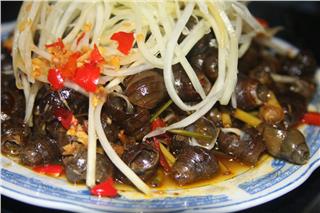
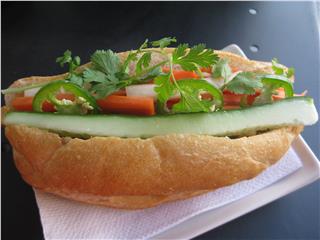
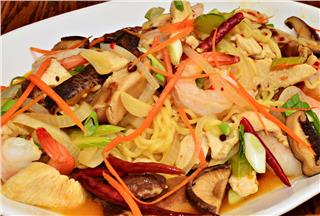

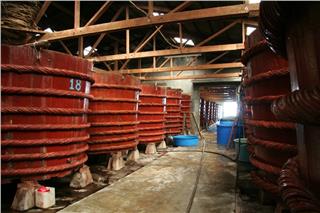

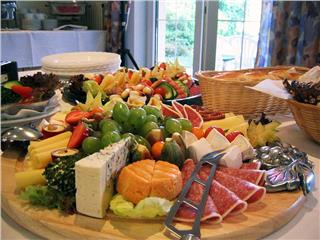
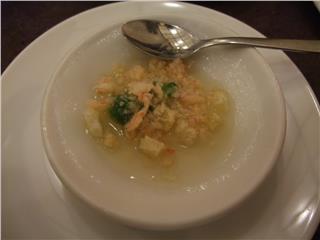
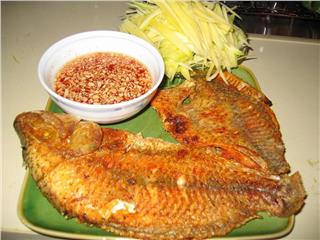
Located in the west of Hanoi, Ha Tay became a part of the capital since 2008. This land is not only famous for the great countryside landscape along with the cultural historic relics and hundreds of craft villages, the rural area is also well known for many simple and fascinating dishes.
During our trip to the land of hundreds of crafts, we visited small village which is located near the Day River. We also have chance to taste simple dishes which represent the life of local people here. “Banh gio” or ash cake is a specialty of Dac So village in Hoai Duc district. In Vietnam, there are many places making ash cake as Vinh Phuc, Lang Son or the Central province of Quang Nam. However, the most famous ash cake is in Dac So village because this is one of the places that still keep the original cake from the flavor to the ingredient.
I was lucky to meet Mrs. Ta Thi Ninh, a resident of Chua village in Dac So commune, Hanoi. She kindly agrees to show me how to make “banh gio”. Mrs. Ninh has been made “banh gio” for more than 20 years. For an experienced people like her, making “banh gio” is very simple. But I think to make a perfect ash cake depends on some skills. Mrs. Ninh has a beautiful garden in which there are almost necessary ingredients for special cake except for sticky rice. I follow her to garden to pick some dong leaves. The dong leaves used to wrap cake should be young leaves. The leaves is cleaned carefully and dried out. After that we peel the grapefruit skins, dry them out and then burn them to create ashes which will be used to soak the rice, because the grapefruit has greater amounts of natural oils.
Each region has its own technique to create ash and the main ingredient of this dish. Dac So villager often use grapefruit skins which was dried out from 10 days to 2 weeks previously. This cake is called ash cake for reason because the ash from burning grapefruit skins is main ingredient creating the beautiful golden brown color and special flavor for the cake. The final water used to make cake has slight yellow color, so it is not easy to distinguish from normal water if we just look at it. But when we touch it, we will feel it is a litter oily and smell smoke. We can use this water to soak sticky rice. Sticky rice is soaked in ash water for 1 day and dried out for few hours. While waiting for the rice, Mrs. Ninh boils dong leaves. She said if we boil dong leaves, the color of the cake will be like the color of amber. Dac So villagers create the pyramid shape for a “banh gio”, because if the cake is wrapped in pyramid shape, it is nice-looking and tastes better.
To ensure the quality of the cake, the pot must be cleaned before boiling the cakes. Ninh told me that we have to put two cakes into a pair which prevents the cakes from absorbing water. The time boiling cake is at least 5 hours. The golden cakes are made from the simple ingredients and are served with honey or malt. The local people here make ash cake all year round because this cake can be eaten at any season and any occasion as festival or Lunar New Year...
Thuong Dinh village in Nhi Khe village, Thuong Tin district, Hanoi has been long well known for making “banh day” or sticky rice cake. This small white round cake has become familiar for many Vietnamese people, especially those in the North. This is the pure and elegant gift of Vietnam cuisine. Passing by the national highway 1A, you can find many stores selling “banh day” like this. Along the national highway 1A, in Thuong Tin district, Hanoi, this village seems to avoid to the hard traffic and is a beautiful place you should visit. About 95% families in the village still follow the traditional trade. Nguyen Thi Tuat is one among young artisans in the village who rewarded the golden hand title for her contribution in preserving the traditional trade.
Six sisters and brother in her family still continue making “banh day”. “Banh day” or Day cake is made of a special kind of sticky rice from Hai Hau district of Nam Dinh province. The rice must be cleaned and soaked in the water for 4 to 5 hours before steamed. While waiting for sticky rice to be steamed, we prepare the green bean. Mrs. Tuat uses a big and long chopstick to stir cooked green bean, while I help her to put the sugar. At with this stage, we have stir green bean really quickly when it is still hot; because it is hot the sugar can melt. After stirring green bean and sugar together, the sweet stuffing was put into a tray and added some dried coconut and grinded sesame. Unlike sweet stuffing, the salty stuffing is added some pepper and meat. This stage requires about 15 minutes with the pounding machine and two strong people to carefully knit sticky rice. Previously, local people have to pound the rice by the mortar which needs 4 to 5 people at least 40 minutes.
The rice flour is now white and much glutinous. The flour is divided into small pieces to make the cake dough. This stage is not easy at all. Obviously, it requires skill. “Banh day” was finally applied a little oil and wrapped in dong leaves. Even at this moment, it still requires a lot of skill. These small round white cakes have appeared on the table of many families, weddings and festivals everywhere. It is the taste of Vietnamese countryside.
Located in the traditional land having many traditional sites and cultural festivals, Giang Xa is one of the oldest villages of Vietnam. Following Nguyen Van Can, management of Giang Xa village historical and cultural sites, we visit Giang Xa temple and listen to the story about Ly Nam De, the first King of Vietnam who lived in here before he rose up in arms against the Chinese. Giang Xa village were skillful people and knew many delicious cake recipes. The most valuable and precious is our traditional Bac cake, which was made firstly to offer to the King during festival days and secondly for each family’s altar. Only Giang Xa villagers knew Bac cake recipe. But during recent decades, living standard has been improved and Bac cake have become a specialty of this village. The elderly in every family in Giang Xa village are able to make Bac cakes, then they have passed down the technique.
I followed Can to meet Do Phu Thu, a 74-year-old artisan in the village. He is one of Giang Xa best cake makers. He has 3 children but only his first son, Do Phu Duong follows his family trade. This trade has been passed down from previous generations. This is a typical trade of this village. Rice used to make cake is high quality sticky rice. It is soaked in water for 2-3 hours. Bac cake has 3 layers including white, red and yellow. To have the white and black layers, we divide rice flour into 2 different parts. A part of white rice flour, we do nothing with it. The other part we mix it with gac fruit to create the red color. This cake is called Bac cake because “bac” here means fried. With the skillful hands and creative mind, Giang Xa villagers have created not only a delicious cake but a beautiful cake. Moreover, this cake was used to offer the King, so it is considered the precious treasure. Giang Xa village is one of the main temples which worships King Ly Nam De. Every year, Giang Xa villagers organize the festival to commemorate the first King of Vietnam.
Source: VTV4 – VTV.vn

 Đặt vé máy bay cho người Việt?
Bấm vào đây
Đặt vé máy bay cho người Việt?
Bấm vào đây
Our service uses cookies for technical, analytical and marketing purposes. See our Cookie và Privacy policies for more information. If you agree to this, just keep browsing.


